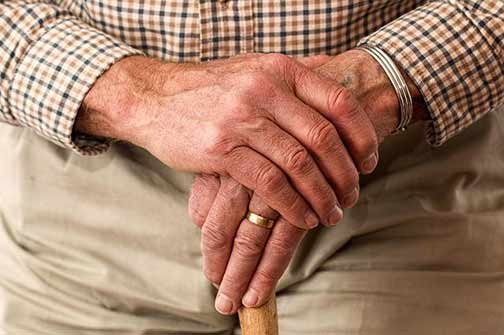
As we age, our needs and capabilities change, and it becomes essential to modify our living spaces to accommodate these changes. One area that often requires attention is the bathroom. Renovating a bathroom to make it more elderly-friendly not only enhances safety but also promotes independence and comfort for those in their golden years. Below we will explore some innovative ideas for a bathroom renovation that caters to the specific needs of elderly individuals.
The Importance of an Elderly-Friendly Bathroom
Before delving into the renovation ideas, let’s highlight the significance of creating an elderly-friendly bathroom. As individuals age, they may experience reduced mobility, balance issues, and other physical limitations. According to the Centers for Disease Control and Prevention (CDC), over 36 million older adults fall each year in the United States, leading to severe injuries. Many of these accidents occur in the bathroom where slip and fall hazards are prevalent. By implementing thoughtful design changes and accessibility features, we can mitigate these risks and provide a safer environment for our loved ones.
Enhancing Safety with Non-Slip Surfaces
One of the primary concerns when renovating an elderly-friendly bathroom is minimizing the likelihood of slipping and falling. Installing non-slip flooring, such as textured tiles or vinyl, can significantly reduce the risk of accidents. Additionally, consider using non-slip bath mats near the bathtub or shower area for added traction. These simple additions provide stability and confidence to individuals with mobility difficulties.
Grab Bars for Stability and Support
When it comes to bathroom safety, grab bars are an excellent addition. These sturdy bars can be strategically placed near the toilet, shower, and bathtub to provide stability and support. Stainless steel or chrome grab bars are popular choices as they are not only functional but also blend seamlessly with the overall bathroom aesthetics. It is important to ensure that the grab bars are securely mounted to the wall and can withstand the weight and force exerted during use.
Easy Access Showers and Walk-in Bathtubs
Traditional bathtubs can be challenging for elderly individuals to access due to the need to step over a high side. A great solution is to replace the bathtub with a walk-in bathtub or a curbless shower. Walk-in bathtubs feature a door that allows easy entry and exit with minimal effort. On the other hand, curbless showers eliminate the need for stepping over and provide a seamless transition from the bathroom floor to the shower area. These options ensure a safer bathing experience and eliminate the risk of trips and falls.
Comfort-Height Toilets for Easy Use
Standard toilets may pose difficulties for elderly individuals, especially when it comes to sitting down and standing up. Installing comfort-height toilets can make a significant difference in terms of accessibility and comfort. These toilets are slightly taller than regular ones, making it easier for seniors to sit and stand without straining their joints or muscles. Adding grab bars near the toilet can provide further support and stability.
Adjustable Showerheads and Handheld Sprayers
Having the flexibility to adjust the height and angle of the showerhead is beneficial for individuals with limited mobility. Installing an adjustable showerhead allows users to position the water flow according to their preference and reach. Handheld sprayers are also a practical addition as they enable elderly individuals to direct the water exactly where they need it. These modifications offer convenience and make bathing a more comfortable experience.
Well-Placed Lighting and Contrast
Proper lighting is crucial in an elderly-friendly bathroom to help prevent accidents and enhance visibility. Make sure the bathroom is well-lit with a combination of natural and artificial lighting. Consider installing bright LED lights to eliminate dark corners and shadows. Furthermore, incorporating contrasting colors on walls, floors, and fixtures can assist those with visual impairments in identifying different elements within the space. A clear distinction between the toilet, walls, and flooring can prevent confusion and reduce the risk of accidents.

Creating an elderly-friendly bathroom benefits not only seniors but also their caregivers and loved ones who can have peace of mind knowing that preventive measures have been implemented.
Extra Considerations for a Thoughtful Renovation
When renovating a bathroom for elderly individuals, it’s essential to pay attention to small details that can significantly improve their experience. Here are a few additional considerations to keep in mind:
- Adequate ventilation: Ensure proper ventilation to prevent mold and mildew buildup, which can be particularly harmful to older adults.
- Accessible storage: Utilize open shelving or accessible cabinets to make toiletries and other essentials easily reachable without the need for excessive bending or stretching.
- Slip-resistant bathmats: Besides having non-slip flooring, placing additional slip-resistant bathmats or rugs near the sink and other frequently used areas can further reduce the risk of accidents.
- Lever faucets: Replace traditional knob-style faucets with lever handles that are easier to grip and maneuver, especially for those with arthritis or limited hand strength.
- Multiple light switches: Install light switches at different heights to accommodate individuals of varying heights and mobility levels.
With these thoughtful renovation ideas and considerations, you can transform your bathroom into an elderly-friendly space that prioritizes safety, accessibility, and comfort. Remember to speak with professionals, such as professional bathroom plumbers or occupational therapists, to ensure your renovations adhere to safety standards and meet the specific needs of the intended users.
Creating an elderly-friendly bathroom benefits not only seniors but also their caregivers and loved ones who can have peace of mind knowing that preventive measures have been implemented. By fostering independence and reducing the risk of accidents, a well-designed bathroom allows older adults to maintain their dignity and enjoy their daily routines with confidence and comfort.
